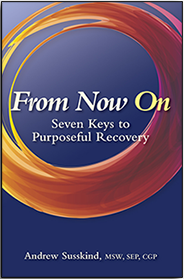Anger was palpable in my home. Unfortunately, my parents were unhappy in their marriage as far back as I can remember, leaving them with a hefty dose of rage and grief. I’m sure there was a time when they had fun and high hopes for a fulfilling life together, but these early dreams were replaced with brokenheartedness.
I do believe my parents did the best they knew how having grown up in the Great Depression with four family members stuffed into one-bedroom apartments in Brooklyn. At this point in my life I don’t blame them, although I once did. Retrospectively, I see their challenges and limitations as well as my own, and now is the time for me to investigate how angers works in my life today.
As a kid, I avoided anger at all costs. When there was an eruption in the family, and there were many, I went to my room, shut the door and listened to 70’s music—possibly Kansas, Yes, or Boston. It was my best attempt to cope at the time but left me utterly alone with my invisible anger.
Today, I believe that unexpressed anger is a danger zone for slipping into problematic sexual behaviors and addictions in general. Nowadays, I don’t want to go to my room and hide from the brokenheartedness. Instead, I try to face my anger directly and find ways to identify and process emotions that were avoided in the past.
Here is what most people don’t realize. Anger is a life force and a life energy. It’s a way of clearly knowing what feels acceptable or unacceptable and then setting boundaries based on this awareness. Once you’re able to identify your anger, it’s possible to express it openly, honestly and directly. If you’re fortunate enough to have someone in your life who is open to listening and understanding you fully, anger creates closeness and deeper intimacy.
For most of my life I had a strong need to be liked which I now realize was a strategy to avoid anger. I used to believe that if I always said “Yes,” nobody would be angry with me. Now I know that I have options. By responding “Yes,” “No” or “Maybe,” I now ask myself which choice truly fits. Saying “No” frees up energy and makes room for a bigger “Yes.” In other words, I check in with myself to decide how I want to use the energy that I gain by saying “No.”
Keep in mind that we’re not focusing on rage in this post. Rage is typically a destructive or self-destructive form of anger that gets out-of-control. Often pent-up for an extended period of time, rage is an extreme dysregulation of the nervous system which requires deeper healing. If we look underneath rage, you will generally find helplessness, deep hurt and disillusionment. Anger and rage are cousins, but anger creates bridges rather than burn them. In Part Two we will examine helpful action steps to express anger more effectively.




